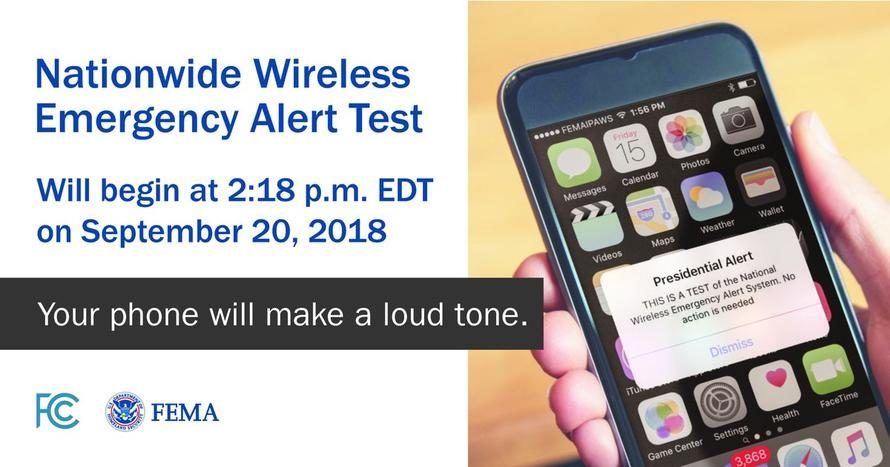The emergency communications drill will begin at 2:18 p.m. EDT through 2:20 p.m. EDT. Every cell phone in the US will receive a text message from President Trump.
All US wireless firms and more than 100 mobile carriers are participating in the exercise that allows for presidential alerts, FEMA wrote in a Thursday press release.
"The EAS [Emergency Alert System] is a national public warning system that provides the president with the communications capability to address the nation during a national emergency," FEMA said in a statement.
Cell phones will receive a text message that states "Presidential Alert" and "THIS IS A TEST of the National Wireless Emergency Alert System. No action is needed."
Separate from the FEMA statement, a FEMA National Test Fact Sheet detailed how the EAS is used with radio and television broadcasters, cable systems, satellite radio and television providers, and wireline video providers. The upcoming FEMA EAS message will read:
"THIS IS A TEST of the National Emergency Alert System. This system was developed by broadcast and cable operators in voluntary cooperation with the Federal Emergency Management Agency, the Federal Communications Commission, and local authorities to keep you informed in the event of an emergency. If this had been an actual emergency, an official message would have followed the tone alert you heard at the start of this message. A similar Wireless Emergency Alert test message has been sent to all cell phones nationwide. Some cell phones will receive the message; others will not. No action is required."The WEA system is currently in use to warn the public about dangerous weather, missing children, and other vital information. The FEMA WEA message will read:
"THIS IS A TEST of the National Wireless Emergency Alert System. No action is needed."The goal of the test will evaluate the readiness to distribute an emergency message nationwide and determine whether improvements are needed, FEMA said in a statement. The upcoming alerts will be sent using FEMA's Integrated Public Alert and Warning System (IPAWS), which allows government officials to send emergency messages to multiple communications networks, including the EAS and WEA as part of the nation's modern alert and warning infrastructure.
Despite Trump's obsession with Twitter as a direct means of communicating, experts told NBC News last week that President Trump will not abuse the "Presidential Alert" system.
"If you separate this from the politics and personality of any individual president then this is a great idea and an amazing use of technology to reach everybody if they're in harms way," said Karen North, director of the Annenberg Digital Social Media program at the University of Southern California.
UCLA communications professor Tim Groeling agreed, told NBC via email, "broadcast-based emergency alert systems ... have remained professional and impartial over decades."
How did Twitter respond to Trump's new communication channels?
So when the tens of millions of Americans get the "Presidential Alert" on September 20, do not freak out -- it is just President Trump debuting the new emergency communication systems that broadcast personalized emergency messages on a much larger plane than Twitter.
As for the many folks who have blocked him on social media, well, it is almost certain that there will be an uproar when liberals look at their phones and see a text message from Trump later this week.





OK then, but keep it simple and safe. “BUG the muricans ONLY”! The rest of the world “PLANS” to live a “LIFE” without the “extra american DRAMA”.